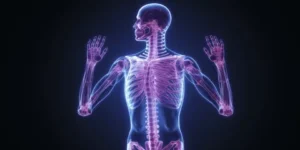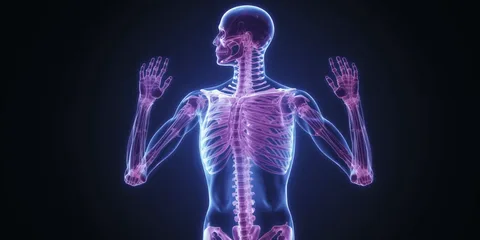Degenerative Joint Disease DJD ICD 10, also known as osteoarthritis, is a chronic condition that affects millions of individuals worldwide. It is one of the most common forms of arthritis and a leading cause of disability, especially among older adults. Proper diagnosis and medical documentation of DJD rely heavily on standardized coding systems. One of the most essential coding systems used in the healthcare industry is the International Classification of Diseases, 10th Revision (ICD-10). In this blog, we will explore the clinical nature of DJD, its classification within the ICD-10 system, common codes used, and how accurate coding helps improve care delivery and reimbursement processes.

What is Degenerative Joint Disease?
DJD ICD 10 is a progressive joint disorder characterized by the gradual deterioration of articular cartilage — the smooth tissue that cushions the ends of bones in a joint. As cartilage wears down, bones begin to rub against each other, causing pain, swelling, decreased mobility, and stiffness. In advanced stages, DJD can lead to joint deformities and a significantly reduced quality of life.
Common Sites Affected:
-
Knees
-
Hips
-
Spine (cervical, thoracic, lumbar)
-
Hands and fingers
-
Feet and ankles
Common Symptoms:
-
Joint pain during or after movement
-
Morning stiffness lasting less than 30 minutes
-
Swelling or tenderness around the joint
-
Loss of flexibility or reduced range of motion
-
Audible popping or cracking sounds (crepitus)
Causes and Risk Factors
DJD can result from a combination of genetic, environmental, and mechanical factors. While aging is the primary risk factor, other contributing elements include:
-
Joint injury or trauma
-
Obesity (increased stress on weight-bearing joints)
-
Repetitive strain from physical activity or occupation
-
Genetics and family history
-
Gender (women are at higher risk post-menopause)
-
Previous inflammatory joint diseases, like rheumatoid arthritis
DJD in the ICD-10 System
The ICD-10-CM (Clinical Modification) coding system is used in the United States to standardize the diagnosis of diseases, injuries, and conditions. DJD is categorized under the broader section of osteoarthritis within Chapter 13: Diseases of the Musculoskeletal System and Connective Tissue (M00–M99).
Osteoarthritis codes range from M15 to M19, with each subcategory identifying specific joints and laterality (right, left, bilateral, or unspecified). Accurate coding requires details such as the location of the disease, type (primary or secondary), and severity.
Common ICD-10 Codes for DJD
Here are the most frequently used ICD-10 codes for documenting Degenerative Joint Disease:
Generalized or Multiple Joints
-
M15.0 – Primary generalized osteoarthritis
-
M15.4 – Secondary multiple osteoarthritis
-
M15.9 – Polyosteoarthritis, unspecified
Knee Osteoarthritis (DJD of the Knee)
-
M17.0 – Bilateral primary osteoarthritis of knee
-
M17.11 – Unilateral primary osteoarthritis, right knee
-
M17.12 – Unilateral primary osteoarthritis, left knee
-
M17.9 – Osteoarthritis of knee, unspecified
Hip Osteoarthritis (DJD of the Hip)
-
M16.0 – Bilateral primary osteoarthritis of hip
-
M16.11 – Unilateral primary osteoarthritis, right hip
-
M16.12 – Unilateral primary osteoarthritis, left hip
-
M16.9 – Osteoarthritis of hip, unspecified
Spinal Osteoarthritis (Spondylosis)
-
M47.812 – Spondylosis without myelopathy or radiculopathy, cervical region
-
M47.814 – Thoracic region
-
M47.816 – Lumbar region
Hand and Finger Osteoarthritis
-
M19.041 – Primary osteoarthritis, right hand
-
M19.042 – Primary osteoarthritis, left hand
Other/Unspecified Locations
-
M19.90 – Unspecified osteoarthritis, unspecified site
Importance of Accurate ICD-10 Coding
Correctly coding DJD is crucial in various healthcare contexts:
Clinical Accuracy
Precise documentation ensures that a patient’s complete health history is recorded. This aids in continuity of care and effective treatment planning, especially for chronic conditions like DJD.
Insurance Reimbursement
Insurance companies rely on ICD-10 codes for claims processing. Incorrect or incomplete codes can lead to denials or delays in reimbursement for healthcare providers.
Data Collection & Research
ICD-10 codes are used for epidemiological tracking and health statistics. They provide insights into disease prevalence, resource allocation, and healthcare trends.
Treatment Authorization
Many surgical and non-surgical treatments for DJD (e.g., joint replacements, physical therapy, corticosteroid injections) require prior authorization. Proper coding supports the medical necessity documentation.
DJD Management and Treatment
While DJD is a progressive and irreversible condition, numerous interventions can help manage symptoms and slow progression:
Non-Pharmacological Treatments:
-
Physical therapy to improve flexibility and strength
-
Weight loss to reduce joint stress
-
Assistive devices like braces or orthotics
-
Exercise programs (e.g., swimming, tai chi)
Pharmacologic Treatments:
-
NSAIDs (e.g., ibuprofen, naproxen)
-
Acetaminophen for pain relief
-
Intra-articular steroid injections
-
Topical analgesics
Surgical Interventions:
-
Arthroscopy for debridement (in selected cases)
-
Joint replacement (arthroplasty) for severe cases
Patient Education and Lifestyle Tips
Patients should be educated on self-management strategies, including:
-
Avoiding high-impact activities
-
Using joint protection techniques
-
Following a healthy diet rich in anti-inflammatory foods
-
Attending regular follow-up appointments
Conclusion
DJD ICD 10 is a prevalent and often debilitating condition that requires careful diagnosis, documentation, and management. With the help of the ICD-10 coding system, healthcare providers can accurately classify and track the disease, enabling better patient care and system-wide improvements.
ICD-10 codes such as M17.0, M16.11, or M47.816 provide the specificity needed to ensure accurate reporting and optimal patient outcomes. As the population ages and the prevalence of DJD increases, proper awareness and utilization of ICD-10 coding will remain critical in supporting the evolving needs of healthcare systems and patients alike.
